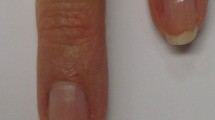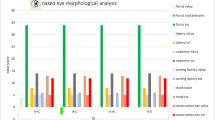Abstract
Carbon monoxide is a component of motor vehicle exhaust fumes, provided a functional catalytic converter is not present. This gas binds avidly to the hemoglobin molecule in red blood cells preventing its oxygen transport function, effectively poisoning the body by starving it of oxygen. In binding to hemoglobin, carbon monoxide forms carboxyhemoglobin, which has a characteristic bright pink color. It has been remarked that the fingernails of victims of carbon monoxide tend to exhibit pink color, otherwise fingernails of deceased bodies tend towards a dark red to blue color. This study sought to objectively determine by using digital image analysis if a color difference occurred between the fingernails of a group of cadavers with carbon monoxide poisoning compared to a group of controls. The fingernails of the carbon monoxide group did tend to be more red than the controls, but due to overlap between the two groups assessment of the fingernails cannot be recommended as a rapid screening test.

Similar content being viewed by others
References
Hartzell GE. Overview of combustion toxicology. Toxicology. 1996;115:7–23.
Stewart RD, Fisher TN, Barettta ED, Dodd HC, Herrmann AA. Experimental human exposure to high concentrations of carbon monoxide. Arch Environ Health. 1973;26:1–7.
Rodkey FL, O’Neal JD, Collison HA, Uddin DE. Relative affinity of hemoglobin S and hemoglobin A for carbon monoxide and oxygen. Clin Chem. 1974;20:83–4.
Jaffe FA. Pathogenicity of carbon monoxide. Am J Forensic Med Pathol. 1997;18:406–10.
Morse D, Sethi J, Choi A. Carbon monoxide-dependent signalling. Crit Care Med. 2002;30(Supplement):S12–7.
Omaye ST. Metabolic modulation of carbon monoxide toxicity. Toxicology. 2002;180:139–50.
Langlois NEI, Kellie IW, Hutcheson D, Jack S, Atkinson P, Grieve JHK. Gas analysis following the diversion of catalytically converted exhaust fumes into the interior of a vehicle. Forensic Sci Int. 1995;74:187–91.
Morgen C, Schramm J, Kofoed P, Steensberg J, Theilade P. Automobile exhaust as a means of suicide: an experimental study with a proposed model. J Forensic Sci. 1998;43:827–36.
Bohnert M, Weinman W, Pollak S. Spectroscopic evaluation of postmortem lividity. Forensic Sci Int. 1999;99:149–58.
Carson HJ, Esslinger K. Carbon monoxide poisoning without cherry-red livor. Am J Forensic Med Pathol. 2001;22:233–5.
Brehmer C, Iten PX. Rapid determination of carboxyhemoglobin in blood by oximeter. Forensic Sci Int. 2003;133:179–81.
Bohnert M, Walther R, Roths T, Honerkamp J. A Monte Carol-based model for steady-state diffuse reflectance spectrometry in human skin: estimation of carbon monoxide concentration in livor mortis. Int J Legal Med. 2005;119:355–62.
Alarie Y. Toxicity of fire smoke. Crit Rev Toxicol. 2002;32:259–89.
Meredith T, Vale A. Carbon monoxide poisoning. Br Med J. 1988;296:77–8.
Hill IR. Incapacitation and fires. Am J Clin Pathol. 1989;10:49–53.
Raub JA, Mathieu-Nolf M, Thom SR. Carbon monoxide poisoning—a public health perspective. Toxicology. 2000;145:1–14.
Klette K, Levine B, Springate C, Smith ML. Toxicological findings in military aircraft fatalities from 1986–1990. Forensic Sci Int. 1992;53:143–8.
Fontes PR, Gomide LAM, Ramos EM, Stringheta PC, Parreiras JFM. Color evaluation of carbon monoxide treated porcine blood. Meat Sci. 2004;68:507–13.
Adair GS. The hemoglobin system VI. The oxygen dissociation curve of hemoglobin. J Biol Chem. 1925;63:529–46.
Acknowledgments
The author wishes to acknowledge the assistance of staff of the former Westmead Department of Forensic Medicine, Dr J.H.K. Grieve for the inspiration for this project and the NSW Coroner for allowing the publication of the data.
Author information
Authors and Affiliations
Corresponding author
Rights and permissions
About this article
Cite this article
Langlois, N.E.I. Digital image analysis of fingernail colour in cadavers comparing carbon monoxide poisoning to controls. Forensic Sci Med Pathol 6, 9–12 (2010). https://doi.org/10.1007/s12024-009-9122-8
Accepted:
Published:
Issue Date:
DOI: https://doi.org/10.1007/s12024-009-9122-8




